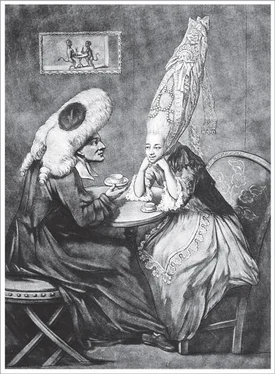Bill Bryson - At Home
Здесь есть возможность читать онлайн «Bill Bryson - At Home» весь текст электронной книги совершенно бесплатно (целиком полную версию без сокращений). В некоторых случаях можно слушать аудио, скачать через торрент в формате fb2 и присутствует краткое содержание. Жанр: Старинная литература, на английском языке. Описание произведения, (предисловие) а так же отзывы посетителей доступны на портале библиотеки ЛибКат.
- Название:At Home
- Автор:
- Жанр:
- Год:неизвестен
- ISBN:нет данных
- Рейтинг книги:4 / 5. Голосов: 1
-
Избранное:Добавить в избранное
- Отзывы:
-
Ваша оценка:
- 80
- 1
- 2
- 3
- 4
- 5
At Home: краткое содержание, описание и аннотация
Предлагаем к чтению аннотацию, описание, краткое содержание или предисловие (зависит от того, что написал сам автор книги «At Home»). Если вы не нашли необходимую информацию о книге — напишите в комментариях, мы постараемся отыскать её.
At Home — читать онлайн бесплатно полную книгу (весь текст) целиком
Ниже представлен текст книги, разбитый по страницам. Система сохранения места последней прочитанной страницы, позволяет с удобством читать онлайн бесплатно книгу «At Home», без необходимости каждый раз заново искать на чём Вы остановились. Поставьте закладку, и сможете в любой момент перейти на страницу, на которой закончили чтение.
Интервал:
Закладка:
Lighting was of many types, all pretty unsatisfactory by modern standards. The most basic form was rushlights, which were made by cutting meadow rushes into strips about a foot and a half in length and coating them in animal fat, usually mutton. These were then placed in a metal holder and burned like a taper. A rushlight typically lasted fifteen to twenty minutes, so a good supply of rushes and patience was required to get through a long evening. Rushes were gathered once a year, in spring, so it was necessary to work out with some care how much illumination was needed over the coming twelve months.
For the better off, the usual form of lighting was candles. These were of two types—tallow and wax. Tallow, made from rendered animal fat, had the great advantage that it could be made at home from the fat of any slaughtered animal and so it was cheap—or at least it was until 1709, when Parliament, under pressure from the chandlers’ guilds, enacted a law making it illegal to make candles at home. This became a source of great resentment in the countryside and probably was widely flouted, but at some risk. People were still permitted to make rushlights, though this was sometimes a largely notional freedom. Because rushlights required a supply of animal fat, and during times of hardship peasants generally didn’t have animals to slaughter, they often had to pass their evenings not only hungry but in the dark.
Tallow was an exasperating material. Because it melted so swiftly, the candle was constantly guttering and therefore needed trimming up to forty times an hour. Tallow also burned with an uneven light, and stank. And because tallow was really just a shaft of decomposing organic matter, the older a tallow candle got, the more malodorous it grew. Far superior were candles made of beeswax. These gave a steadier light and needed less trimming, but they cost about four times as much and so tended to be used only for best. The amount of illumination one gave oneself was a telling indicator of status. Elizabeth Gaskell in one of her novels had a character, a Miss Jenkyns, who kept two candles out but burned only one at a time, and constantly, fussily switched between the two to keep them at exactly equal lengths. That way if guests came they wouldn’t find candles of unequal sizes and deduce her embarrassing frugality.
Where conventional fuels were scarce, people used whatever would burn—gorse, ferns, seaweed, dried dung. In the Shetland Islands, according to James Boswell, stormy petrels were so naturally oily that people sometimes just stuck a wick down their throats and lit it, but I suspect Boswell was being a touch credulous. Elsewhere in Scotland dung was gathered and dried out to be used as an illuminant and fuel. The loss of fertilizing dung from fields left a lot of land impoverished and is said to have accelerated the agricultural decline there. Some people were luckier than others. In Dorset, around Kimmeridge Bay, the oil-rich shales on the beach burned like coal, could be gathered for free, and actually provided a better light. For those who could afford it, oil lamps were the most efficient option, but oil was expensive and oil lamps were dirty and needed cleaning daily. Even over the course of an evening, a lamp might lose 40 percent of its illuminating power as its chimney accumulated soot. If not properly attended to, they could be terribly filthy. In At Home: The American Family, 1750–1870 , Elisabeth Donaghy Garrett records how one girl who had attended a party in New England where the lamps smoked reported afterward, “Our noses were all black, & our clothes were perfectly gray and … quite ruined.” For that reason, many people stuck with candles even after other options became available. Catharine Beecher and her sister Harriet Beecher Stowe in The American Woman’s Home , a sort of American answer to Mrs. Beeton’s Book of Household Management , continued providing instructions for making candles at home until 1869.
Until the late eighteenth century the quality of lighting had remained unchanged for some three thousand years. But in 1783 a Swiss physicist named Ami Argand invented a lamp that increased lighting levels dramatically by the simple expedient of getting more oxygen to the flame. Argand’s lamps also came with a knob that allowed the user to adjust the flame’s level of brightness—a novelty that left many users almost speechless with gratitude. Thomas Jefferson was an early enthusiast and remarked in frank admiration how a single Argand lamp could provide illumination equal to half a dozen candles. He was so impressed that he brought back several Argand lamps from Paris in 1790.
Argand himself never got the riches he deserved. His patents were not respected in France, so he relocated to England, but they weren’t respected there either or indeed anywhere else, and Argand made almost nothing from his devoted ingenuity.
The best light of all came from whale oil, and the best type of whale oil was spermaceti from the head of the sperm whale. Sperm whales are mysterious and elusive animals that are even now little understood. They produce and store great reserves of spermaceti—up to three tons of it—in a cavernous chamber in their skulls. Despite its name, spermaceti is not sperm and has no reproductive function, but when exposed to air it turns from a translucent watery liquid to a milky white cream—and it is obvious at once why sailors gave the sperm whale its name. No one has ever worked out what spermaceti is for. It may somehow assist with buoyancy, or it may help with the processing of nitrogen in the whale’s blood. Sperm whales dive with great speed to an enormous depth—up to a mile—without evident ill effects, and it is thought that the spermaceti may in some unfathomed way explain why they don’t get the bends. Another theory is that the spermaceti provides shock absorption for males when they fight for mating rights. This would help explain the sperm whale’s infamous predilection for headbutting whaling ships, often lethally, when angered. But it isn’t actually known whether sperm whales headbutt one another. No less mysterious is the very valuable commodity they produce known as ambergris (from French words meaning “gray amber,” though in fact ambergris is as likely to be black as gray). Ambergris is formed in the digestive system of sperm whales—only recently has it been determined that it is made from the beaks of squid, the one part of that animal that they cannot digest—and excreted at irregular intervals. For centuries it was found floating in the sea or washed up on beaches, so no one knew where it came from. It made a peerless fixative for perfumes, which gave it great value, although people who could afford it ate it as well. Charles II of England thought ambergris and eggs the finest dish in existence. (The taste of ambergris is said to recall vanilla.) In any case, the presence of ambergris alongside all that precious spermaceti made sperm whales hugely attractive as prey.
In common with other types of whales, the oil of sperm whales was also craved by industry as an emollient in the manufacture of soaps and paints and as lubrication for machinery. Whales also yielded gratifying quantities of baleen, a bonelike substance taken from the upper jaw, which provided a sturdy but flexible material for corset stays, buggy whips, and other items that needed a measure of natural springiness.
Whale oil was an American speciality, both to produce and to consume. It was whaling that brought so much early wealth to New England ports like Nantucket and Salem. In 1846, America had more than 650 whaling ships, roughly three times as many as all the rest of the world put together. Whale oil was taxed heavily throughout Europe, so people there tended to use colza (a type of oil made from cole seeds) or camphene (a derivative of turpentine), which made an excellent light, though it was highly unstable and tended, unnervingly, to explode.
Читать дальшеИнтервал:
Закладка:
Похожие книги на «At Home»
Представляем Вашему вниманию похожие книги на «At Home» списком для выбора. Мы отобрали схожую по названию и смыслу литературу в надежде предоставить читателям больше вариантов отыскать новые, интересные, ещё непрочитанные произведения.
Обсуждение, отзывы о книге «At Home» и просто собственные мнения читателей. Оставьте ваши комментарии, напишите, что Вы думаете о произведении, его смысле или главных героях. Укажите что конкретно понравилось, а что нет, и почему Вы так считаете.












